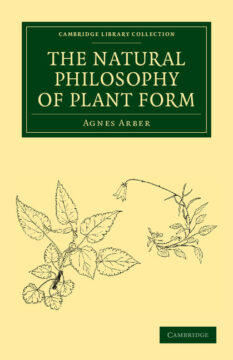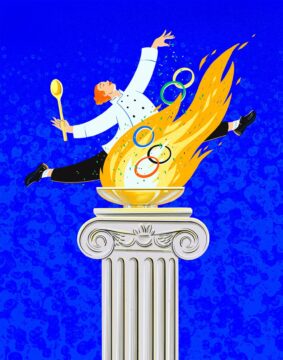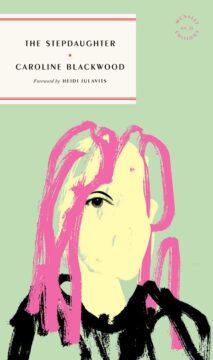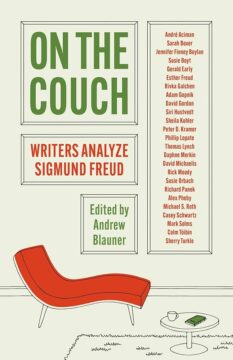Elevation
Above the lakes, above the vales,
The mountains and the woods, the clouds, the seas,
Beyond the sun, beyond the ether,
Beyond the confines of the starry spheres,
My soul, you move with ease,
And like a strong swimmer in rapture in the wave
You wing your way blithely through boundless space
With virile joy unspeakable.
Fly far, far away from this baneful miasma
And purify yourself in the celestial air,
Drink the ethereal fire of those limpid regions
As you would the purest of heavenly nectars.
Beyond the vast sorrows and all the vexations
That weigh upon our lives and obscure our vision,
Happy is he who can with his vigorous wing
Soar up towards those fields luminous and serene,
He whose thoughts, like skylarks,
Toward the morning sky take flight
— Who hovers over life and understands with ease
The language of flowers and silent things!
by Charles Baudelaire
from The Flowers of Evil
Fresno, CA: Academy Library Guild, 1954
Translated by William Aggeler

 It was once common, in Western societies at least, to think of plants as the passive, inert background to animal life, or as mere animal fodder. Plants could be fascinating in their own right, of course, but they lacked much of what made animals and humans interesting, such as agency, intelligence, cognition, intention, consciousness, decision-making, self-identification, sociality and altruism. However, groundbreaking developments in the plant sciences since the end of the previous century have blown that view out of the water. We are just beginning to glimpse the extraordinary complexity and subtlety of plants’ relations with their environment, with each other and with other living beings. We owe these radical developments in our understanding of plants to one area of study in particular: the study of plant behaviour.
It was once common, in Western societies at least, to think of plants as the passive, inert background to animal life, or as mere animal fodder. Plants could be fascinating in their own right, of course, but they lacked much of what made animals and humans interesting, such as agency, intelligence, cognition, intention, consciousness, decision-making, self-identification, sociality and altruism. However, groundbreaking developments in the plant sciences since the end of the previous century have blown that view out of the water. We are just beginning to glimpse the extraordinary complexity and subtlety of plants’ relations with their environment, with each other and with other living beings. We owe these radical developments in our understanding of plants to one area of study in particular: the study of plant behaviour. Many entrepreneurs have tried to create prediction markets, contracts that trade on the outcome of future events. Luke Nosek, cofounder of PayPal, once
Many entrepreneurs have tried to create prediction markets, contracts that trade on the outcome of future events. Luke Nosek, cofounder of PayPal, once  As someone trained in physics, and as an academic paid to research, I have been drawn to studying one essential contributor to these crises: how energy and electricity are produced, especially those methods proposed to mitigate climate change. Prominent among these proposals is nuclear energy.
As someone trained in physics, and as an academic paid to research, I have been drawn to studying one essential contributor to these crises: how energy and electricity are produced, especially those methods proposed to mitigate climate change. Prominent among these proposals is nuclear energy. Running a finger over a row of books in a Delhi library one afternoon, I stopped at a title that promised danger. The stacks were abundant in books like RSS Misunderstood and Is RSS the Enemy?, which often turned out to be self-published polemics that were too long, however short they were. This one was different. On its front was the full title,
Running a finger over a row of books in a Delhi library one afternoon, I stopped at a title that promised danger. The stacks were abundant in books like RSS Misunderstood and Is RSS the Enemy?, which often turned out to be self-published polemics that were too long, however short they were. This one was different. On its front was the full title,  Hundreds of millions of people across the globe now earn their living less with their backs and more with their brains, relying on sharp reasoning and creative thinking. So how about seeing who’s best at that?
Hundreds of millions of people across the globe now earn their living less with their backs and more with their brains, relying on sharp reasoning and creative thinking. So how about seeing who’s best at that? W
W OPEN ANY BOOK BY CAROLINE BLACKWOOD and you will encounter the same woman. Articulate, adrift, callous, cosmically self-absorbed. She’s in the middle of her life, a retired actress or model, once striking and sought-after. Her misery has a predatory quality. Decisions made idly and capriciously she now clings to as essential facets of her “character.” She rebels continually against the restraints and privations she inflicts upon herself. She behaves as though she were onstage, thundering dramatic monologues of deceit and self-justification. What’s clearest is her anger: pure, whole, just beneath the surface, like a calcium deposit under the skin.
OPEN ANY BOOK BY CAROLINE BLACKWOOD and you will encounter the same woman. Articulate, adrift, callous, cosmically self-absorbed. She’s in the middle of her life, a retired actress or model, once striking and sought-after. Her misery has a predatory quality. Decisions made idly and capriciously she now clings to as essential facets of her “character.” She rebels continually against the restraints and privations she inflicts upon herself. She behaves as though she were onstage, thundering dramatic monologues of deceit and self-justification. What’s clearest is her anger: pure, whole, just beneath the surface, like a calcium deposit under the skin. At the 1912 Olympic Games in Stockholm, Sweden, Jim Thorpe easily won the decathlon in the first modern version of the event. The grueling, ten-part feat was not the only addition to the burgeoning modern games. Other events that debuted at the 1912 Olympics included architecture, sculpture, painting, music… and literature.
At the 1912 Olympic Games in Stockholm, Sweden, Jim Thorpe easily won the decathlon in the first modern version of the event. The grueling, ten-part feat was not the only addition to the burgeoning modern games. Other events that debuted at the 1912 Olympics included architecture, sculpture, painting, music… and literature. Drivers on a busy US freeway have been controlled by an AI since March, as part of a study that has put a machine-learning system in charge of setting variable speed limits on the road. The impact on efficiency and driver safety is unclear, as researchers are still analysing the results.
Drivers on a busy US freeway have been controlled by an AI since March, as part of a study that has put a machine-learning system in charge of setting variable speed limits on the road. The impact on efficiency and driver safety is unclear, as researchers are still analysing the results. Transnational organized crime is a paradox: ubiquitous yet invisible. While criminal tactics evolve rapidly, government-led responses are often static. When criminal networks are squeezed in one jurisdiction, they rapidly balloon in another. Although the problem concerns everyone, it is often considered too sensitive to discuss at the national, much less the global, level. As a result, the international community – including the United Nations and its member states –
Transnational organized crime is a paradox: ubiquitous yet invisible. While criminal tactics evolve rapidly, government-led responses are often static. When criminal networks are squeezed in one jurisdiction, they rapidly balloon in another. Although the problem concerns everyone, it is often considered too sensitive to discuss at the national, much less the global, level. As a result, the international community – including the United Nations and its member states –  My family history of cancer is impressive, and not in a good way.
My family history of cancer is impressive, and not in a good way. The brain is like a medieval castle perched on a cliff, protected on all sides by high walls, making it nearly impenetrable. Its shield is the blood-brain barrier, a layer of tightly connected cells that only allows an extremely selective group of molecules to pass. The barrier keeps delicate brain cells safely away from harmful substances, but it also blocks therapeutic proteins—like, for example, those that grab onto and neutralize toxic clumps in Alzheimer’s disease. One way to smuggle proteins across? A cat parasite. A
The brain is like a medieval castle perched on a cliff, protected on all sides by high walls, making it nearly impenetrable. Its shield is the blood-brain barrier, a layer of tightly connected cells that only allows an extremely selective group of molecules to pass. The barrier keeps delicate brain cells safely away from harmful substances, but it also blocks therapeutic proteins—like, for example, those that grab onto and neutralize toxic clumps in Alzheimer’s disease. One way to smuggle proteins across? A cat parasite. A  Freud’s influence waned during the 1980s and 1990s, in part because of the so-called “Freud Wars,” during which critics like
Freud’s influence waned during the 1980s and 1990s, in part because of the so-called “Freud Wars,” during which critics like